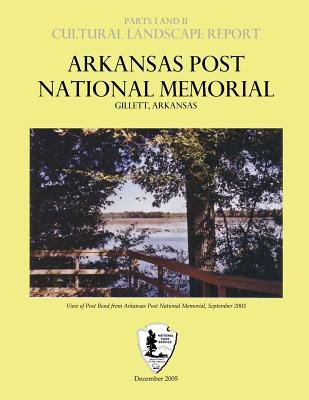
- We will send in 10–14 business days.
- Author: National Park Service
- Publisher: CreateSpace Independent Publishing Platform
- Year: 2013
- Pages: 554
- ISBN-10: 148202103X
- ISBN-13: 9781482021035
- Format: 21.6 x 28 x 2.8 cm, softcover
- Language: English
- SAVE -10% with code: EXTRA
Arkansas Post National Memorial - Cultural Landscape Report (e-book) (used book) | bookbook.eu
Reviews
Description
The purpose of this Cultural Landscape Report is to guide treatment and use of the above-ground resources associated with the Arkansas Post National Memorial (APNM). To do this, an investigation and evaluation of the historic landscape has been conducted, using National Park Service and National Register of Historic Places guidelines. The documentation of historic significance and evaluation of integrity of the cultural landscape serves as a framework upon which treatment recommendations are based. The report provides park managers with a comprehensive understanding of the physical evolution of the historic landscape, and guidance for future management of the site. The report is organized in the following manner: Part I: Chapter 1: Introduction; Documents the scope of the report, location and description of the property, identifies project consultants, and describes the methodology used. Chapter 2: Management Issues; Provides a list of management issues to be addressed throughout the project. Chapter 3: Site History; Presents a historic narrative of the physical evolution of the site. Historic period plans support the historic narrative that addresses the major time periods identified for the site. These periods have been defined as pre-contact, the Colonial/Revolutionary War, settlement and early statehood, the Civil War, late nineteenth; and early twentieth century development, twentieth century and state park development, and NPS development. Part II: Chapter 4: Existing Conditions; Provides a narrative and graphics addressing the existing landscape features, vegetation, and the archeological resources present at the site. Chapter 5: Analysis; Compares findings from the site history and existing conditions information to analyze the landscape characteristics and features of the APNM landscape. The historic integrity assessment has focused on determining if the characteristics and features that defined the landscape during the historic periods are still present and if they retain the ability to physically represent the site's history. Chapter 6: Treatment Recommendations; Overall preservation treatment recommendations as well as specific implementation guidelines are provided. Includes a treatment plan. Chapter 7: Implementation Guidelines; Includes general recommendations for phasing the treatments recommended in Chapter 6. Also includes future Project Management Statements and "Class C" cost estimates for implementation.
EXTRA 10 % discount with code: EXTRA
The promotion ends in 20d.03:15:55
The discount code is valid when purchasing from 10 €. Discounts do not stack.
- Author: National Park Service
- Publisher: CreateSpace Independent Publishing Platform
- Year: 2013
- Pages: 554
- ISBN-10: 148202103X
- ISBN-13: 9781482021035
- Format: 21.6 x 28 x 2.8 cm, softcover
- Language: English English
The purpose of this Cultural Landscape Report is to guide treatment and use of the above-ground resources associated with the Arkansas Post National Memorial (APNM). To do this, an investigation and evaluation of the historic landscape has been conducted, using National Park Service and National Register of Historic Places guidelines. The documentation of historic significance and evaluation of integrity of the cultural landscape serves as a framework upon which treatment recommendations are based. The report provides park managers with a comprehensive understanding of the physical evolution of the historic landscape, and guidance for future management of the site. The report is organized in the following manner: Part I: Chapter 1: Introduction; Documents the scope of the report, location and description of the property, identifies project consultants, and describes the methodology used. Chapter 2: Management Issues; Provides a list of management issues to be addressed throughout the project. Chapter 3: Site History; Presents a historic narrative of the physical evolution of the site. Historic period plans support the historic narrative that addresses the major time periods identified for the site. These periods have been defined as pre-contact, the Colonial/Revolutionary War, settlement and early statehood, the Civil War, late nineteenth; and early twentieth century development, twentieth century and state park development, and NPS development. Part II: Chapter 4: Existing Conditions; Provides a narrative and graphics addressing the existing landscape features, vegetation, and the archeological resources present at the site. Chapter 5: Analysis; Compares findings from the site history and existing conditions information to analyze the landscape characteristics and features of the APNM landscape. The historic integrity assessment has focused on determining if the characteristics and features that defined the landscape during the historic periods are still present and if they retain the ability to physically represent the site's history. Chapter 6: Treatment Recommendations; Overall preservation treatment recommendations as well as specific implementation guidelines are provided. Includes a treatment plan. Chapter 7: Implementation Guidelines; Includes general recommendations for phasing the treatments recommended in Chapter 6. Also includes future Project Management Statements and "Class C" cost estimates for implementation.


Reviews